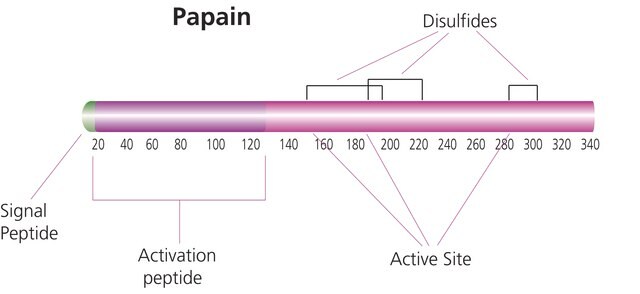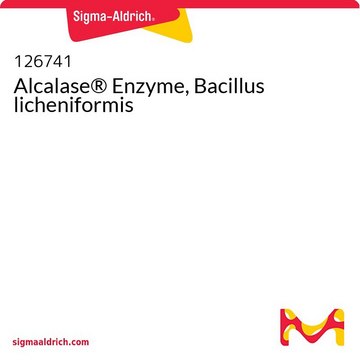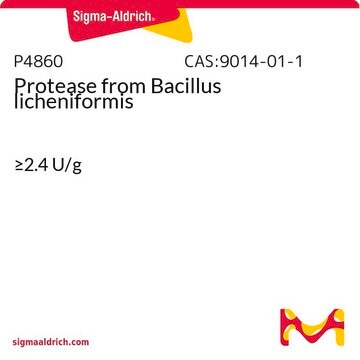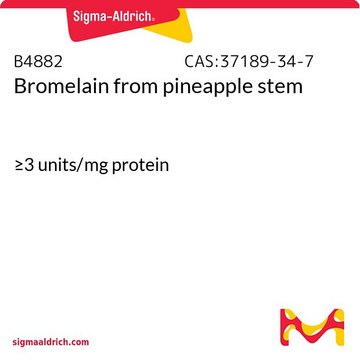76216
Papain from Carica papaya
solution, light brown, ≥10 U/mg protein (~25 mg/ml)
About This Item
Prodotti consigliati
Origine biologica
papaya
Forma fisica
solution
Attività specifica
≥10 U/mg protein (~25 mg/ml)
PM
Mr ~23000
tecniche
cell culture | mammalian: suitable
single cell analysis: suitable
Colore
light brown
Temperatura di conservazione
2-8°C
Cerchi prodotti simili? Visita Guida al confronto tra prodotti
Descrizione generale
Applicazioni
- in the enzymatic dissociation of rat cortices to extract astrocytes for cell culture
- to study its effects on Alpaca seminal plasma viscosity and sperm function
- to study its effects on the yield and cryo-survival of Rhinoceros spermatozoa
Azioni biochim/fisiol
Definizione di unità
Avvertenze
Danger
Indicazioni di pericolo
Consigli di prudenza
Classi di pericolo
Eye Irrit. 2 - Resp. Sens. 1 - Skin Irrit. 2 - STOT SE 3
Organi bersaglio
Respiratory system
Codice della classe di stoccaggio
11 - Combustible Solids
Classe di pericolosità dell'acqua (WGK)
WGK 1
Punto d’infiammabilità (°F)
Not applicable
Punto d’infiammabilità (°C)
Not applicable
Dispositivi di protezione individuale
dust mask type N95 (US), Eyeshields, Faceshields, Gloves
Certificati d'analisi (COA)
Cerca il Certificati d'analisi (COA) digitando il numero di lotto/batch corrispondente. I numeri di lotto o di batch sono stampati sull'etichetta dei prodotti dopo la parola ‘Lotto’ o ‘Batch’.
Possiedi già questo prodotto?
I documenti relativi ai prodotti acquistati recentemente sono disponibili nell’Archivio dei documenti.
Il team dei nostri ricercatori vanta grande esperienza in tutte le aree della ricerca quali Life Science, scienza dei materiali, sintesi chimica, cromatografia, discipline analitiche, ecc..
Contatta l'Assistenza Tecnica.







